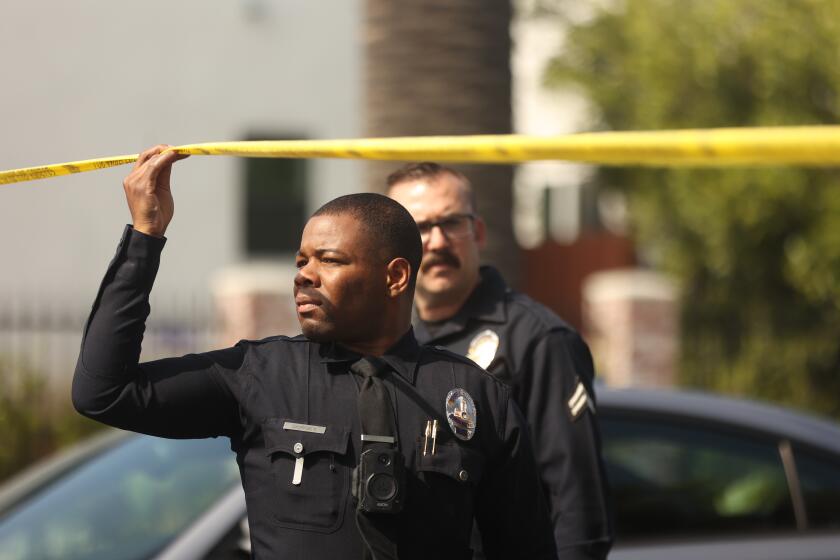Skull Found Behind Church Is That of Native American
- Share via
The Rev. Gary Mohr took a phone call Monday morning at home, and the news wasn’t good: Workers installing a new playground in back of his Long Beach church had just unearthed a human skull.
“My big fear was that someone had jumped our fence and buried a body in our yard,” he said Tuesday.
Mohr’s concerns turned out to be unfounded. Within hours, the Los Angeles County coroner determined that the skull found at St. Luke’s Evangelical Lutheran Church on East Wardlow Road was the remains of a Native American, and officials are speculating that it could be up to 2,000 years old.
The discovery of Native American remains at construction sites in California probably happens more than 100 times each year, said Larry Myers, a spokesman for the state Native American Heritage Commission.
This case, though, was somewhat different.
On Monday, a worker was digging a hole to anchor a new playground set when he saw what appeared to be a rock resting 18 inches below the surface. It turned out to be a partial skull.
Long Beach Police homicide detectives were summoned to the church. The Los Angeles County coroner’s office also dispatched an anthropologist and archeologist.
The coroner’s investigators examined the shape of the skull’s incisors and wear patterns on its teeth and concluded that both bore the marks of Native Americans.
In turn, representatives of the Gabrieleno-Tongva tribe were notified of the find. Tribal members lived in villages across the Los Angeles Basin before the Spanish missionaries arrived in the late 1700s.
Robert Dorame, a tribal official, visited the site Tuesday. He recommended that digging continue to see whether there are any other remains on the church property. The church is planning to hire an archeologist.
Dorame also wants to see the remains reburied on church grounds.
“Because they removed the skull, that means that the landowner now has to make a judgment call about where on the property the remains can be reinterred,” Dorame said.
“Because we are not federally recognized, we have no lands.”
The issue has been a sore point for the tribe, which has legal status with the state but not the federal government.
“We have 300 to 400 ancestors out of the ground [in recent years] and who have not been reinterred,” Dorame said. “We have nothing, not one inch of land, and I think it’s a really sad note in the history of the area.”
Mohr is sympathetic. One reason: He is a trained archeologist who over the years has frequently traveled to Israel to participate in digs.
“I’ve traveled halfway around the world to do excavations,” Mohr said. “And now there’s one in my backyard.”
More to Read
Sign up for Essential California
The most important California stories and recommendations in your inbox every morning.
You may occasionally receive promotional content from the Los Angeles Times.













